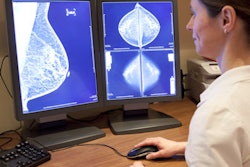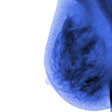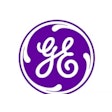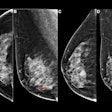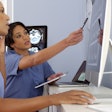Patient navigation services boost breast and cervical cancer screening and follow-up, according to research published June 9 in JAMA Internal Medicine.
A team led by Heidi D. Nelson, MD, from Kaiser Permanente Bernard J. Tyson School of Medicine found that, on average, breast and cervical cancer screening increased by about 14% and 15%, respectively, when it provided navigation services such as patient scheduling assistance or help with travel to appointments.
“These findings support the applicability of patient navigation across U.S. clinical practice," Nelson told AuntMinnie.com.
Owing to barriers that may hinder timely care, screening, and follow-up rates for breast and cervical cancer vary across socioeconomic and demographic groups. Previous studies suggest that patient navigators can help women overcome these barriers. However, these are not commonly used in cancer screening, the researchers noted.
Nelson and colleagues investigated the pros and cons of implementing patient navigation services with the goal of increasing screening and follow-up rates for breast and cervical cancer.
Final analysis included information extracted from several databases containing research articles published from 2000 to 2024. This consisted of 42 randomized clinical trials with 39,111 participants that assessed the effectiveness of patient navigation services. No studies described the potential harms of implementing these services.
The team considered interventions to be patient navigation services when studies described them as such or included core components. For the latter, this included services such as individualized aid with patient scheduling or follow-up or help with travel to and from an appointment.
The researchers reported the following findings:
Compared with comparison groups, patient navigation led to higher rates of breast cancer screening and follow-up, with risk ratios of 1.5 and 1.23, respectively.
Patient navigation improved cervical cancer screening and follow-up rates, with risk ratios of 1.62 and 1.63, respectively.
Predicted one-year absolute rates following patient navigation were 13.8% higher for breast cancer screening and 15.6% higher for cervical cancer screening.
“Sensitivity analyses demonstrated higher screening rates with patient navigation versus comparison groups for general populations and populations based on race, ethnicity, low-income status, and other characteristics,” the researchers wrote.
The study authors highlighted the effectiveness of patient navigation services with their results in mind. They wrote that clinical applications of patient navigation “could support patients through the entire screening process to improve screening and follow-up care.”
Nelson said that these services may include individualized person-centered assessment and planning, healthcare access, health system navigation, referrals to appropriate support services, and patient education.
"In many cases, the navigator connects existing services to individualized patient needs," she added.
Nelson told AuntMinnie.com that the team is currently exploring methods of implementing patient navigation for cancer screening into routine clinical care in health systems.
The full study can be read here.




